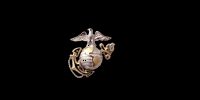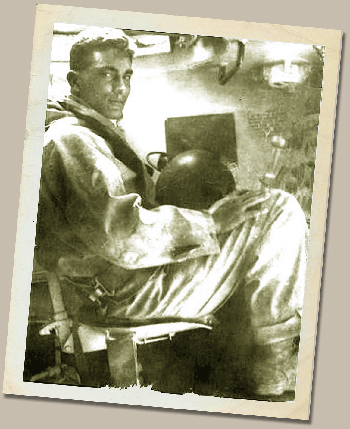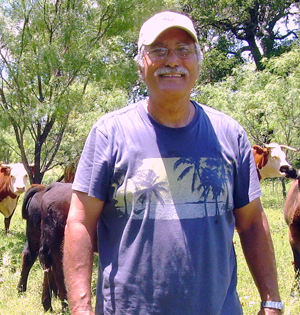DECLASSIFIED
Web site by Craig Slaughter © 2009
This is not an official USMC site.
OperationStarlite.com
Republic of South Vietnam - August 1965
I was a 20 year old corporal at the time of Operation Starlite. Like many of the Marines engaged in Operation Starlite, it was my baptism of fire. Even though I participated in many Marine operations after Starlite none of them were as memorable to me as Starlite.
On August 17, 1965, the Company Commander of "A" Company 3rd Amtrac Battalion, 1st Mar Div, Captain Beir, called a formation of "A" Company in the Company Area at the Marine enclave at Chu-Lai. He advised certain elements of "A" Company, of which my amtrac and crew were part, to prepare several days gear and be ready to embark by ship later that afternoon. He did not elaborate beyond that very basic command. I remember looking out to sea and thinking where is the ship? There were no Navy ships to be seen at that time. However, at the given time an LSD (Landing Ship Dock) appeared over the horizon and we loaded our amtracs (LVT's) into the tank deck and the ship departed the area. It was not until we were aboard ship and underway that we were told the full nature of our mission.
On the morning of August 18, 1965 our ship, along with others, was positioned about a half mile off the shoreline. As daylight appeared Marines from the troop ships began to come alongside our ship in LCVP's and climb aboard using the wet nets which were hanging from the ships side. The Marines then began loading through the open top hatches of the LVT's, which were on the tank deck of the LSD. As this was taking place A-4 Sky Hawks began strafing runs along the beach dropping napalm. Standing on the deck of the LSD and watching all of this all I could think of was the World War II movies I had seen as a youngster. I remember thinking, after spending three years in the Marine Corps, which had included a previous tour of duty in the Far East; I was really going into a full-blown battle.
My LVT (3A 01) of which I was the crew chief, was on the far left end of the first wave to the beach. Shortly after making land fall I remember hearing radio traffic from other Marine units that had already engaged the VC. It didn't take long to start hearing reports of KIA's ( killed in action) and WIA's (wounded in action). I remember thinking there are actually Marines being killed and wounded. After weeks of chasing the elusive VC we are in a real fight now.
My LVT was a "Command Tractor", which meant it was configured with radio equipment, to be a rolling Command convoy. Shortly after landing, a convoy, which included my amtrac, was formed. The convoy became Col. Petross’s rolling command post. As I recall the convoy consisted of at least two command tractors several regular LVT's and an Ontos or two, however I am foggy on that issue.
As the infantry moved inland the command convoy moved slowly along behind. Periodically we would stop for periods of time and the officers would gather outside of the LVT's and talk and point at maps and then the convoy would move a little further and stop and the same activity would repeat itself. Sometime before noon the convoy was positioned along a dirt road and I overheard reports concerning an LVT supply column engaged in a fire fight. At about the same time there were two rounds, probably recoilless rifles, that whizzed overhead. An M-48 flame tank came roaring into the area and stopped. What I remember was there was a hole about the size of a silver dollar through the turret of the tank. Up until that time I didn't think much of anything could penetrate a tank turret.
From a distance I watched several Marine officers and staff NCOs gathered beside the tank talking with the tank commander. It seemed like all of a sudden a decision was made and marines starting loading aboard several of the LVT's. I saw Sgt Lessie Strickland standing on the open ramp of one of the amtracs waving marines aboard. To my surprise SSgt. Forsyte, my platoon sergeant, hollered at me to grab some 3.5 rockets and get aboard an LVT with him. I ran inside my amtrac and grabbed three 3.5 rockets from the storage locker and as I was trying to get my M-14 rifle SSgt Forsyte hollered at me again and said to come-on and don't worry about a rifle. I ran and boarded the amtrac on which Sgt Strickland was standing and took a seat on the troop bench with SSgt Forsyte beside me armed with a 3.5 rocket launcher. The amtrac filled with Marines the ramp closed and off we went. So history has it that as I approached the first fire fight of my life, me being a three year veteran of the Marine Corps and an NCO on top of that, I was armed with three 3.5 rockets which I was carrying in my arms like a baby and no rifle. Not very John Wayne of me.
Not being able to see anything outside of the interior of the LVT it didn't seem like we traveled more than a mile or so when the amtrac came to an abrupt stop. The ramp fell and marines started pouring out, me included. We ran out into a barrage of small arms fire and motar rounds dropping all around. Marines were trying to take cover and engage the hidden enemy.
To go into great detail would not serve a particular purpose. That day, the 18th, we lost several of our men. Marines from “A” Company, 3rd Amtrac Battalion, 1st Mar Div, as well as from "B" Company, 1st Amtrac Battalion, 3rd Mar Div, These men will never be forgotten: Lt. Robert Cochran; Sgt Lessie Strickland; Cpl Rowland Adamoli; LCpl John Bell Jr.; LCpl Victor Flores Jr.; LCpl Verlon Hadley and Pfc James Kalil. I do not recall how many others were wounded from “A" Company. After the medical evacuation the majority of Marines continued on to the objective, which was to reach and rescue the embattled LVT supply column. Several of us were assigned to stay and guard a crippled amtrac damaged during the ambush. Late that night we were joined by the remnants of a Marine Company and we all walked back to the command post.
It wasn’t over yet. On Aug 24 Pfc George A. Bell died when his
R&R flight crashed in Hong Kong Harbor trying to return men to
the battlefield.
History will tell you there was little contact with the VC after that
first day. Operation Starlite was a success it showed the VC
as well as the South Vietnamese Army that the U.S. Marines
had come to fight.
I hope my recollections of Operation Starlite will help those who
might be interested in this battle have a better understanding.
I am retired after nearly forty years as a Texas Law Enforcement
Officer.
Semper Fi
Cpl. Regis DeArza
“A” Company, 3rd Amtrac Battalion, 1st Mar Div.
Recollections of an Amtracker
by Cpl Regis DeArza
“A” Company, 3rd Amtrac Battalion, 1st Mar Div
Note: Original recollections from Regis were provided to Ed Nicholls in 1999 as part Ed’s “Operation Starlite Survivors Association Project”.



